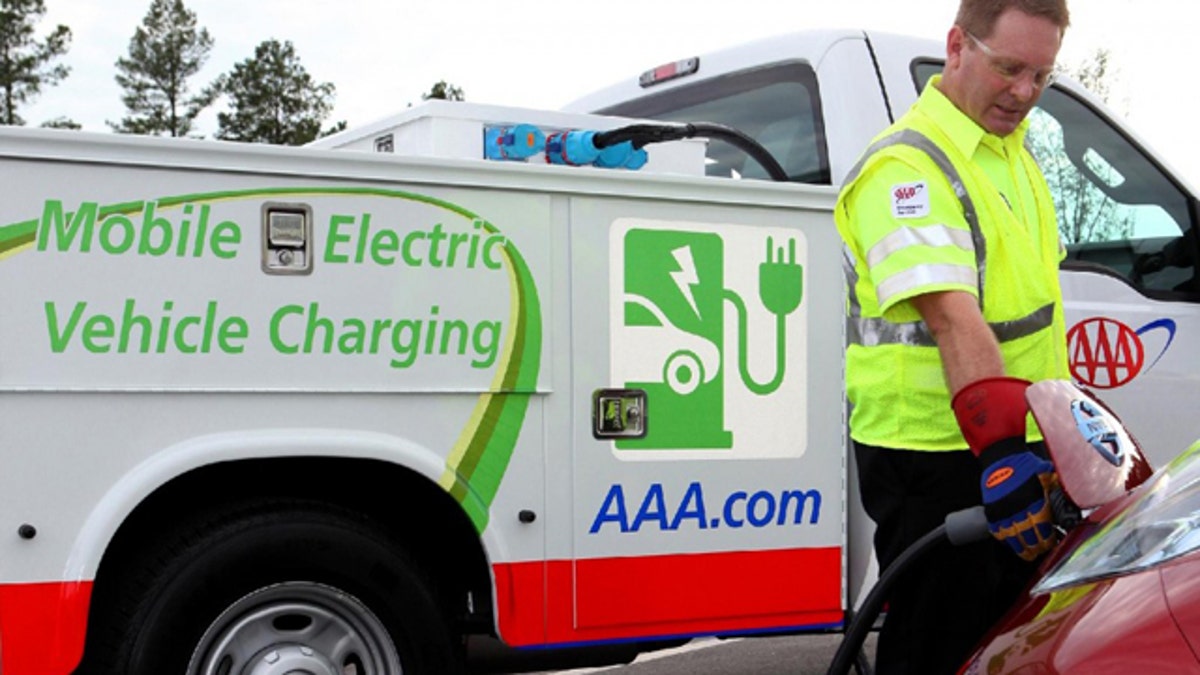
(AAA)
Everyone makes mistakes once in a while, and we’re sure most drivers have run out of gasoline at least once in their life.
But as the saying goes, it's hard to carry a gallon of electricity back to your plug-in car if the battery is completely out of charge.
Which is why AAA is now testing roadside assistance for rapid charging of electric cars whose owners are stranded because they ran the battery pack flat.
15 miles' worth in 10 minutes
John Nielson, who's AAA's director of auto repair, buying services and consumer information, talked with GreenCarReports last week about the organization's progress in prototyping the roadside charging service.
"Level 2 charging is nice, but not meaning for roadside service," he started off. "So we're focusing on DC fast charging" using the CHAdeMO standard now offered in Nissan Leaf and 2012 Mitsubishi 'i' electric cars.
Three ways to make electricity
The AAA is testing three different versions of portable charging equipment, all of them designed to fit into a roadside service vehicle that could be a half- or three-quarter-ton pickup truck, a small commercial van, or a similar vehicle--but not a tow truck.
One option uses a generator driven by the power takeoff (PTO) on the transmission of a 3/4-ton truck; a second uses stored energy from a lithium-ion battery pack; and a third uses a generator fueled by either compressed natural gas or biodiesel.
Two units of each of the three designs are now being deployed. They're already in service in the San Francisco Bay Area and Portland, and by the end of the year, Los Angeles, Seattle, Knoxville, and Tampa will be added to the list of pilot locations.
25 kilowatts is enough
Working with technology partners, the association settled on charging at 20 to 25 kilowatts, a high enough rate to allow the service truck to provide 15 miles of extra range in about 10 minutes.
That's not the full 50-kilowatt rate possible under the CHAdeMO standard, but it keeps the cost of the equipment more manageable. The organization pretty much had to create its own portable DC quick-charging equipment, Nielson said; it's not an off-the-shelf item.
But since AAA hasn't yet responded to a single recharging service call, it has many questions left to answer:
Will recharging requests come in a similar pattern to out-of-gas calls? Nielson thinks not, in that electric-car owners who commute on weekdays will likely have predictable routes within their range--but when they have more varied needs on weekends, they may push the limits more.
What does an electric-car-owning AAA member expect from a service call? Will 15 miles of added range be enough?
Will electric cars have other roadside service needs? They don't have fluids to leak or belts to break, but might there be other kinds of emergencies?
How can the AAA help educate members, car buyers, and garages about electric cars?
Nielson notes that a roadside recharging call will be free to all AAA members. Members in potentially hazardous situations--those on the shoulder next to high-speed traffic, or those with small children in the car--get highest priority, he said, but the AAA works to "make every member happy" during calls.
The AAA has almost 53 million North American members, and 1,100 offices across the United States and Canada. It calls itself "a vocal and leading advocate for its members [and] for motorists and travelers across the nation."



















